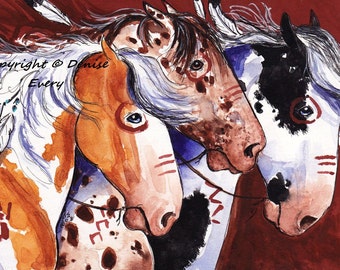Thursday, March 19, 2015
Tuesday, March 17, 2015
"Assimilation" (Forcing Others to Be the Same as You) and Native Identity Research
In this text, a young Cheyenne boy, Young Bull, is forcibly escorted away from the color, life, and happiness of his family to be "educated" and "cleaned" of his Native culture. Instead of living in a tepee, he lives in a sterile barracks and attends a school that more closely resembles a boot camp. "No more Cheyenne" the whites say as they take his buckskin and cut his braids. An imposing sign hangs in the workroom, "speak English!" condemning any use of Native languages. His white instructors say, "You have lost nothing of value. You will be like us." The clear implication is that they don't view Native American culture as having any value. To be valuable, they say, you must be white.
As Young Bull listens to history told by the victors, his people's bravery at Battle of the Little Bighorn and other important events are lost. Finally, he tries to run away but is tracked down like an animal and punished by being locked up with a ball and chain.
 One teacher, however, voices empathy for Young Bull, telling him, "Never forget that you are an Indian inside. Don't let us take your memories." Young Bull complies, drawing pictures of Cheyenne war ponies in his lined notebook. He imagines himself cutting these lines which, like prison wires, bind him. He imagines himself Cheyenne again.
One teacher, however, voices empathy for Young Bull, telling him, "Never forget that you are an Indian inside. Don't let us take your memories." Young Bull complies, drawing pictures of Cheyenne war ponies in his lined notebook. He imagines himself cutting these lines which, like prison wires, bind him. He imagines himself Cheyenne again.Because many cultural problems occur simply because we are unaware of the past, I now want you to do the Cheyenne culture the justice that we once denied it's own citizens. I want you to learn a little about the tribe's history.
These are the most valuable websites for looking at Indian boarding schools: http://www.pbs.org/indiancountry/history/boarding.html
https://content.lib.washington.edu/aipnw/marr.html
(Note: there are not a lot of websites describing this, and the two above are the best. Do your best to read them and feel free to bring in information from Cheyenne Again. Some of the language on these websites is kind of advanced, but just draw out the things that you think are most important. )
Part A: Create at least 5 slides on CoLab that describe what boarding schools were like. You might choose to answer why these schools were created, how the Indians (imprisoned) there changed over time, what they may have lost, etc. Definitely look through the pbs.org website included above, but you can also do other research on Indian boarding schools. In addition to writing text, you're welcome/ encouraged to find before and after pictures like I use above to help illustrate your points. Some other good sites might be:
http://www.english.illinois.edu/maps/poets/a_f/erdrich/boarding/gallery.htm
https://www.youtube.com/watch?v=L6PU7eNrJnE&app=desktop
Part B: In addition to describing life on an Indian boarding school, you should also pick a Native American tribe to research. These websites are easier for elementary readers than the ones you worked with above. Do at least 5-10 slides for your tribe. Identify the tribe you're researching, talk about their culture, what they ate, where they lived, some of their ancient legends, what sort of houses they built, etc. If you choose the Cheyenne, the links below are good:
http://www.bigorrin.org/cheyenne_kids.htm
http://www.native-languages.org/cheyenne_animals.htm
http://nativeamericans.mrdonn.org/plains/cheyenne.html
Some other important tribes might be the Navajo, the Iroquois, the Nez Perce, the Sioux (Lakota), the Cherokee, or the Seminole. If you click on this link, you can find these tribes and others:
http://nativeamericans.mrdonn.org/index.html
Because I want to give you lots of freedom and see where your interest leads you, you may also research Australian Aborigine culture. These links are good.
http://panique.com.au/trishansoz/aborigine/aborigin.html
http://www.encyclopedia.com/topic/Aboriginal_Australians.aspx
http://www.factmonster.com/spot/aboriginal1.html
Have fun!
Subscribe to:
Posts (Atom)